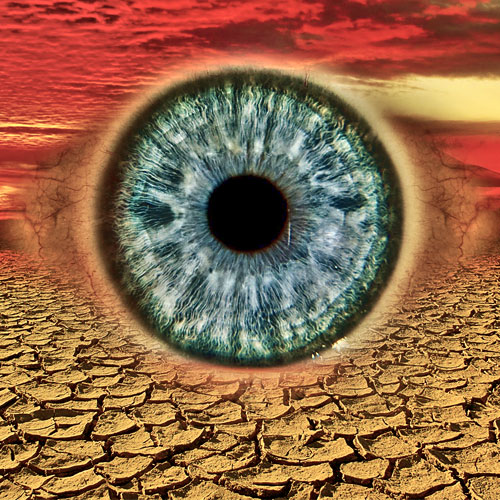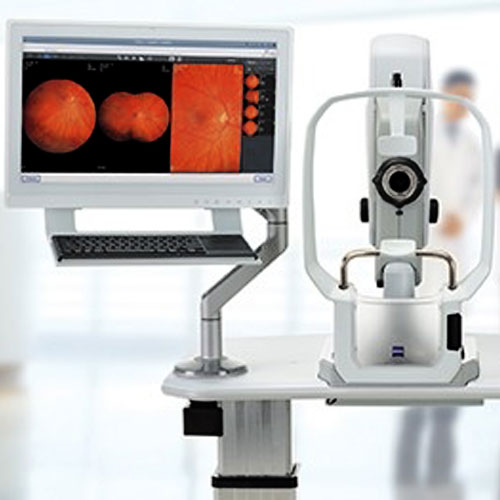Do your eyes feel like someone poured sand in them burning and/or Irritated.
If so, Why not let the Doctors at Family Eye Care Clinic provide you with relief of those symptoms. We specialize in treating the Dry Eyes of the Ark-La-Tex.
What is Dry Eye
Dry eye is a condition in which a person doesn't have enough quality tears to lubricate and nourish the eye. Tears are necessary for maintaining the health of the front surface of the eye and for providing clear vision. Dry eye is a common and often chronic problem, particularly in older adults.
With each blink of the eyelids, tears spread across the front surface of the eye, known as the cornea. Tears provide lubrication, reduce the risk of eye infection, wash away foreign matter in the eye, and keep the surface of the eyes smooth and clear. Excess tears in the eyes flow into small drainage ducts in the inner corners of the eyelids, which drain into the back of the nose. Dry eyes can occur when tear production and drainage is not in balance.
People with dry eyes either do not produce enough tears or their tears are of a poor quality.
Inadequate amount of tears
Tears are produced by several glands in and around the eyelids. Tear production tends to diminish with age, with various medical conditions or as a side effect of certain medicines. Environmental conditions, such as wind and dry climates, can also decrease tear volume due to increased tear evaporation. When the normal amount of tear production decreases or tears evaporate too quickly from the eyes, symptoms of dry eye can develop.
Poor quality of tears
Tears are made up of three layers: oil, water and mucus. Each component protects and nourishes the front surface of the eye. A smooth oil layer helps prevent evaporation of the water layer, while the mucin layer spreads the tears evenly over the surface of the eye. If the tears evaporate too quickly or do not spread evenly over the cornea due to deficiencies with any of the three tear layers, dry eye symptoms can develop.
The most common form of dry eyes occurs when the water layer of tears is inadequate. This condition, called keratoconjunctivitis sicca (KCS), is also referred to as dry eye syndrome.
People with dry eyes may experience irritated, gritty, scratchy or burning eyes; a feeling of something in their eyes; excess watering; and blurred vision. Advanced dry eyes may damage the front surface of the eye and impair vision.
Symptoms
While experiencing symptoms of dry eye can be temporary for some people, those with Chronic Dry Eye disease may find that their symptoms get worse and more frequent over time. Constant dry eye symptoms can affect their ability to do many activities that involve their eyes.
Though they may vary from person to person, common Chronic Dry Eye symptoms include:
- Dryness/itching
- Burning/stinging
- Watering eyes
- Sensitivity to light
- A gritty or sandy sensation
- Feeling like something is in your eye
- Blurry vision or difficulty seeing at night
- Problems wearing contact lenses
- Excess tears following very dry eye periods
- Inability to cry
- Uncomfortable contact lenses
- Pain and redness of the eye and eyelids
- Crusting of eyelids
While experiencing symptoms of dry eye can be temporary for some people, those with Chronic Dry Eye disease may find that their symptoms get worse and more frequent over time. Constant dry eye symptoms can affect their ability to do many activities that involve their eyes. And, remember, Chronic Dry Eye disease may have more serious consequences for your eyes. It may damage the front surface of the eye, increase the risk of eye infection, and affect your vision.
If you have questions about Chronic Dry Eye, based on your symptoms and their impact on you, your next important step should be to call Family Eye Care Clinic and schedule a Chronic Dry Eye exam.
You should seek medical attention now if your dry eyes are experiencing any of the following:
- Dryness, itching, burning, or stinging
- Watering eyes
- A gritty or sandy sensation/feeling like something is in your eye
- Blurry vision or sensitivity to light
- Problems wearing contact lenses
- Problems with daily activities, such as reading, driving at night, watching TV, or working on the computer
- More frequent symptoms than usual, causing frequent use of artificial tears
- Worse/more severe symptoms than usual, and using artificial tears isn’t enough
Seeing your Doctor
What Should You Be Telling Your Eye Doctor During Your Visit?
Key information you should be prepared to provide: Any symptoms you're experiencing, including, but not limited to: ( Keep a diary) Dryness, itching, burning, or stinging, watering eyes, gritty or sandy feeling-like something in your eyes, blurry vision, sensitivity to light, problem wearing contacts and how often you use artificial tears.
Also mention, how much your dry eyes are affecting you, computer use, watching TV, ability to drive at night.
Treatment Options
There are several ways to manage Chronic Dry Eye (CDE) that you should discuss with your ophthalmologist or optometrist. Together, you and your eye doctor will choose the treatment option that's best for you.
Treatment options include:
- Artificial tears. Also known as over-the-counter eye drops, most of these temporarily provide moisture to the eye and relieve dry eye symptoms. ( This is not a solution, just quick relief)
- Prescription medicine- Cyclosporine, an anti-inflammatory medication, is the only prescription drug available to treat dry eye. It may take three to six months of twice-a-day dosages for the medication to work. In some cases of severe dry eye, short term use of corticosteroid eye drops that decrease inflammation is required.
- Tear duct plugs. Also known as punctal plugs, these plugs are made of silicone or collagen, are reversible and are a temporary measure. In severe cases, permanent plugs may be considered.
Your optometrist might recommend prescription eye drops, ointments warm compresses, lid massage, or eyelid cleaners to help reduce inflammation around the surface of the eyes.



